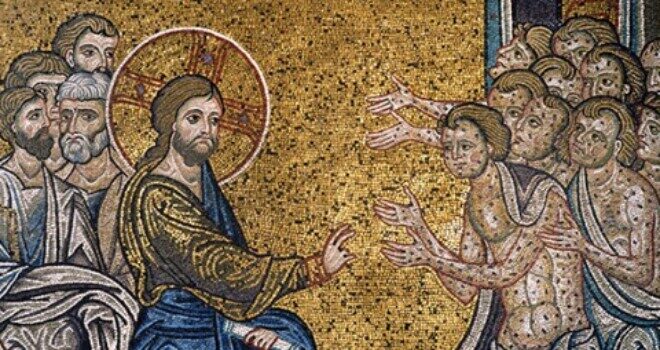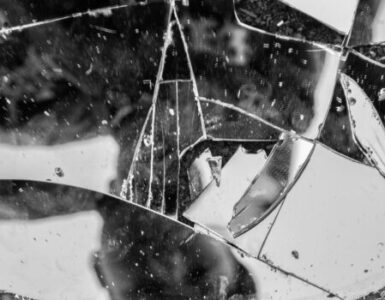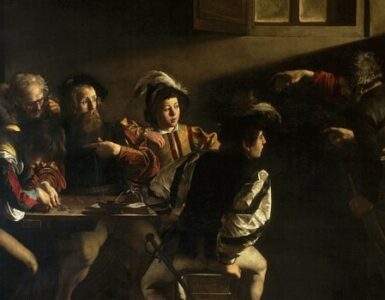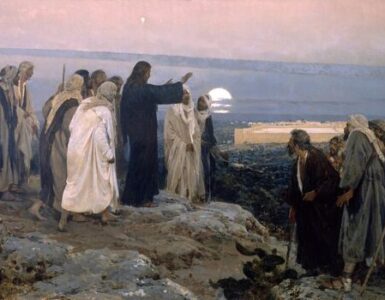In the year 63 B.C. the Romans conquered the nation of Israel. This conquest fulfilled an important and necessary precondition prophesized in chapter 2 of the Book of Daniel concerning the timing of the arrival of the Messiah. That prophecy stipulated that the Messiah would make his appearance during the fourth kingdom to rule over Israel. Prior to the Roman conquest, Israel had been ruled in succession, by the Babylonians, the Persians, and the Greeks.
This prophecy of Daniel was well known throughout Israel, especially by the rabbis or “teachers” of the law. When the Romans occupied Israel, the rabbis knew the arrival of the Messiah could occur at any time. Fearful that a false messiah would come forward and make an appearance to mislead the Jewish people, they searched the scriptures for any signs that would confirm his arrival. They found these signs written in the Book of the Prophet Isaiah:
Say to the fearful of heart, be strong, do not fear! Here is your God, he comes with vindication; with divine recompense he comes to save you. Then the eyes of the blind will see, and the ears of the deaf be opened; then the lame shall leap like a stag, and the mute tongue sing for joy. (Isa 35:4-6)
This passage clearly states that the Messiah, when made manifest to his people, will perform a series of specific miracles.
Upon reflection of this passage, the rabbis were still concerned that these miracles could somehow be performed by someone merely claiming to be the Messiah, and that would be far more damaging to the faithful than the false prophets who had come before. So, pulling from this passage, they devised three very specific miracles which they felt only the Messiah could perform.
The first of these messianic miracles was the curing of a leper in an advanced stage of the disease. Such a person with advanced leprosy would not be able to walk as a result of the ravages of the illness. At the time, leprosy was understood to be a progressive disease that no one ever recuperates from—no Israelite had been cured of leprosy since the chosen people entered the Promised Land, some thirteen hundred years before. This messianic miracle would fulfill “the lame shall leap like a stag” in the passage from Isaiah above.
The second of these messianic miracles was the casting out of a demon from a mute. The significance of this miracle is that an exorcist (then as well as today) must first obtain the name of the demon possessing the person, before the exorcist can cast that demon out. A mute spirit cannot speak and thus cannot reveal its name; hence, no exorcist except the Messiah could cast out such a demon. This messianic miracle would fulfill “and the mute tongue sing for joy” in the passage from Isaiah above.
The third and final messianic miracle was providing sight to a person born blind. While there had been instances where someone had regained their sight after temporarily losing it, no one had ever obtained their sight after they had been born blind. This messianic miracle would fulfill “the eyes of the blind will see” in the passage from Isaiah above.
These three messianic miracles were not only taught to the people by the rabbis prior to Jesus’ manifestation, but were also documented, in all likelihood, in the Mishnah. The Mishnah was a collection of famous rabbinic commentaries written on the Hebrew scriptures and for Jews was second in authority and importance to those scriptures. The rabbinic writings that pertained to the three messianic miracles further established what the Jewish authorities were to do when these messianic miracles were claimed to have been performed. The Jewish people now awaited the arrival of the Messiah armed with this knowledge.
Jesus commenced His public ministry some ninety years after the “fourth kingdom,” the Roman conquest of Israel, the first indication of the coming of the Messiah. First, Jesus fulfills the miracle of healing the leper advanced in disease. A man “full of leprosy” approached Jesus while a large crowd was following Him and said:
“Lord, if you wish, you can make me clean.” He stretched out his hand, touched him, and said, “I will do it. Be made clean.” His leprosy was cleansed immediately. Then Jesus said to him, “See that you tell no one, but go show yourself to the priest, and offer the gift that Moses prescribed; that will be proof for them. (Mt 8:2-4)
What did Jesus mean when He said, “that will be proof for them?” Jesus, by virtue of performing the first messianic miracle in front of a large crowd, is officially claiming that He is the longed for Messiah! The reference to “them” refers to the Jewish authorities, especially the members of the Sanhedrin, which was at that time the governing body of the Jewish people.
Imagine the reaction of the priests on duty in the Temple when the man approached them claiming that he had been cured of leprosy. This after no one for thirteen hundred years had done so! Drawings of the layout of Solomon’s Temple which survive to the present day even have a room referred to as the “cleansing the leper room.” There is also the prescribed ritual the priest was to perform when a person healed of leprosy came to the Temple seeking a spiritual cleansing, which covers the entirety of chapter 14 of the Book of Leviticus.
In addition to the actual ritual, it included a thorough investigation to ascertain whether the person truly had leprosy, how and by whom were they cured, and an examination of the body to ensure that the leprosy was in fact no longer present. This investigation yielded proof that the man had indeed been cured of leprosy by Jesus of Nazareth.
As prescribed, a messianic matter was to be brought to the attention of the Sanhedrin. There, the messianic claim by Jesus was discussed and deemed worthy of further investigation. This resulted in the commencement of the period referred to as the “stage of observation.” During this stage, a select group of Pharisees and rabbis would closely observe Jesus’ every word and action. These representatives of the Sanhedrin were not permitted to ask Jesus any questions at this time.
A gospel account detailing this “stage of observation” is recorded in Luke’s Gospel under the heading “The healing of the paralytic.” In the opening verse of that passage, it states:
One day as Jesus was teaching, Pharisees and teachers of the law were sitting there who had come from every village of Galilee and Judea and Jerusalem, and the power of the Lord was with him for healing. (Lk 5:17)
Why do you suppose these men, from all over Israel, were in attendance that day? Simply put, they were the select group of Pharisees and rabbis who were to observe Jesus. The place where this took place was overflowing as a result. The four friends of the paralytic had to cut a hole in the roof in order to lower him down in front of Jesus!
Recall that in this gospel account, Jesus first forgives the paralytic man his sins. The reaction of the Pharisees and teachers was introspective as they asked themselves, “Who is this who speaks blasphemies?” The text then goes on to state “that Jesus knew their thoughts.” Jesus would go on to prove that He had the power to forgive sins by curing the man’s paralysis. The circumstances in this gospel account of the healing of the paralytic substantiate that it occurred during the “stage of observation.”
After a sufficient period of observation had been conducted, this select group would have returned to Jerusalem and reported their observations to the members of the Sanhedrin. This ultimately led the Sanhedrin to declare that this messianic claim by Jesus was significant and a second period, called the “stage of interrogation,” ensued. During this stage, Jesus is thoroughly interrogated with a barrage of questions concerning His teachings and His claim of Messiahship.
Again, since the Roman conquest of Israel, the Jewish people knew that the Messiah’s appearance was imminent, so the rabbis’ three-miracle, multi-step system of verification was put into place to prevent false messianic claims. They reasoned that the order of difficulty between the unique scripture-based miracles and the evaluating process was such that no one but the real Messiah could prove true. As Jesus continues to pass their tests, however, the Pharisees’ suspicion rises. Although we know how this story ends, tomorrow we will examine the remaining two messianic miracles that Jesus performed and how the Jewish authorities responded to each of them.
Photo by Alfredo Dagli Orti of the Byzantine mosaic Miracles of Christ: Healing of the Ten Lepers at the Monreale Cathedral in Sicily (12th century). Retrieved from The Christian Century.











